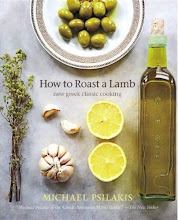 My absolute favorite place to go to eat in Chicago on a Sunday morning is in our beautiful Chinatown for Dim Sum at Won Kow Restaurant. It is a true slice of heaven...
My absolute favorite place to go to eat in Chicago on a Sunday morning is in our beautiful Chinatown for Dim Sum at Won Kow Restaurant. It is a true slice of heaven...To be perfectly honest, the best ever Dim Sum I have eaten was at Kay Cheung Seafood in San Francisco’s Chinatown. However, this year my wallet can not stretch enought to dine out at either place to celebrate Chinese New Year. Yet Chinese New Year has brought out my outrageous craving for my all time Dim Sum favorite, the delicious gyoza dumplings…shrimp, pork, vegetarian…one bite of these and I am one happy litttle person.
Due to the freezing weather here and the very chilly economy everywhere, I decided to make my own vegetarian gyoza dumplings to celebrate.
 Gyoza is a popular dumpling in Japanese cuisine.
Gyoza is a popular dumpling in Japanese cuisine.Gyoza originated in China, and it is said to have been introduced to Japan in late 17th century.
Gyoza dumplings are cooked in various ways: deep-fried, boiled, steamed, or pan-fried. The most common way to cook gyoza is pan-fried. The bottoms of gyoza dumplings should be brown and crunchy. I like to steam fresh or previously frozen gyoza for 5 minutes and then pan-fry them in grape seed oil.

When I can get fresh, wild caught shrimp, I dice it fine then mash it with cabbage, onions, chives and a bit of lemon zest for a lighter filling. The shrimp-filled dumplings are called ebi-gyoza. However, my favorite gyoza and are the ones that you see here are vegetarian. The filling is a mixture of white cabbage, carrots, shallots, mashed edamame beans, white daikon radish, chives, sesame oil, ground ginger, salt and white pepper.

Today I steamed my gyoza that I had made in a mesh strainer over 3 inches of water (make sure the water does not touch the mesh basket or the food). Before steaming, I rubbed the mesh with a tiny bit of grape seed oil so that the dumplings don't stick to the strainer.
I steamed them for 6-10 minutes until they were well cooked all the way through.

I usually just dip in a high quality fermented Soy Sauce with no additives.
A good quality soy sauce only lists a few natural ingredients such as water, soybeans, wheat and salt. A sauce with a thin consistency is a good sign as a high quality soy sauce always has a light, thin consistency and a wonderful fresh flavor.
I like the Guangdong brand and also the Kikkoman brand that is widely available.
For another delicious gyoza dipping sauce, I mix :
1/8 tsp ground fresh ginger
Hot Pepper flakes to your taste
A pinch of sugar
Mix well, dip the gyoza in your sauce of choice...
Then...
Yum.
Gung Hay Fat Choy…
have a prosperous and good year...!


 Cut a lemon in half and pour salt on the open side of the lemon. Rub this onto tarnished areas of the copper pot. The salt acts as a very mild abrasive as it melts and reacts with the lemon and cleans the copper. This method also creates an even matt patina on the pots that gives my kitchen a warm inviting glow when hung in a row above my stove.
Cut a lemon in half and pour salt on the open side of the lemon. Rub this onto tarnished areas of the copper pot. The salt acts as a very mild abrasive as it melts and reacts with the lemon and cleans the copper. This method also creates an even matt patina on the pots that gives my kitchen a warm inviting glow when hung in a row above my stove.





 Winter Cucumber-Yogurt Salad
Winter Cucumber-Yogurt Salad Matcha (Green Tea) Shortbread Cookies
Matcha (Green Tea) Shortbread Cookies Directions
Directions 
 Place on a parchment or Silpat lined cookie sheet, approximately 1 inch apart.
Place on a parchment or Silpat lined cookie sheet, approximately 1 inch apart. NOTE 3 Matcha Sprinkling Sugar
NOTE 3 Matcha Sprinkling Sugar At one point in my holiday cooking, I ran out of the brand of kosher salt that I use, Diamond Crystal. I ran out to a nearby market as it was snowing like crazy. All they carried on their shelves was Morton Kosher salt. I had not used that brand before, but I thought…well kosher salt is kosher salt.
At one point in my holiday cooking, I ran out of the brand of kosher salt that I use, Diamond Crystal. I ran out to a nearby market as it was snowing like crazy. All they carried on their shelves was Morton Kosher salt. I had not used that brand before, but I thought…well kosher salt is kosher salt. I noticed a difference as soon as I poured the white granules into my favorite flea-market find saltcellar. The new-to-me kosher salt seemed much whiter and denser than my usual kosher salt.
I noticed a difference as soon as I poured the white granules into my favorite flea-market find saltcellar. The new-to-me kosher salt seemed much whiter and denser than my usual kosher salt. I also read in another favorite book, Cookwise: The Secrets of Cooking Revealed by Shirley O. Corriher (she is known to many of you as the "Food Historian" lady on Alton Brown’s Good Eats Food Network show).
I also read in another favorite book, Cookwise: The Secrets of Cooking Revealed by Shirley O. Corriher (she is known to many of you as the "Food Historian" lady on Alton Brown’s Good Eats Food Network show).






